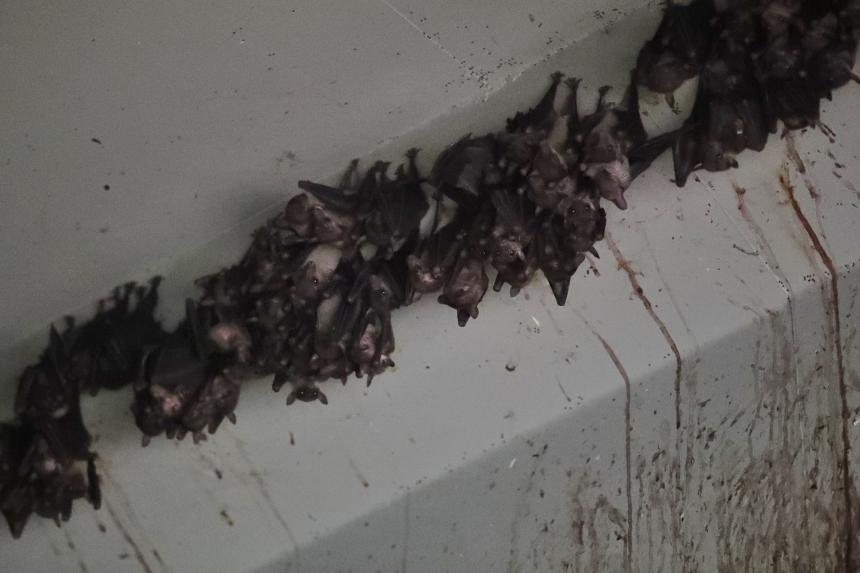SINGAPORE - Plans to build a court at a bat roosting site near the Bukit Timah Nature Reserve have been put on hold pending the results of an environmental study, The Straits Times has learnt.
In end-2018, the space under a flyover near the nature reserve was mooted as a potential site for the construction of a hard court for community and recreational use following feedback from residents, said the Singapore Land Authority (SLA).
“No bats were observed at the site during the checks in 2018,” said an SLA spokesman, adding that SLA and the National Parks Board (NParks) are now aware of the presence of cave nectar bats – important pollinators in Singapore’s forests – under the viaduct.
“Hence, SLA will be commissioning a bat impact assessment to reassess the viability of the project, and no construction has commenced on the site,” said the spokesman.
When ST visited the site surrounded by landed residential property earlier in October, a couple of hundred bats were seen roosting under the flyover.
ST is not identifying the exact location to prevent disturbances to the roost.
Dr Benjamin Lee, NParks’ director of wildlife management research, said the cave nectar bat (Eonycteris spelaea) is one of two native bat species in Singapore that consume nectar and pollen. These creatures are effective pollinators of many forest trees, including the durian tree, and other food crops such as bananas, petai beans, jambu and coconut.
They perform the important ecosystem service of pollination and help to sustain and regenerate our forests, he said.
The site under the flyover is one of only two known roosting sites of the cave nectar bat in Singapore, said wildlife consultant Nick Baker.
He said he first saw the colony of cave nectar bats there in 2004, and again in 2009. That no bats were spotted there in 2018 highlighted how little is known about the bats in that area, said Mr Baker.
“Clearly, what is needed is a long-term population study. It may be too soon for a bat impact assessment if we have no detailed understanding of population dynamics, roost selection and breeding patterns of the bats,” he said.

The fact that bats have been seen in the area since 2004 shows the colony seems to be long established, and that the site is of national importance for the species, said Mr Baker.
He added: “The colony should be protected from disturbance, and the species treasured as part of Singapore’s natural heritage, and an important component of forest ecology.”


